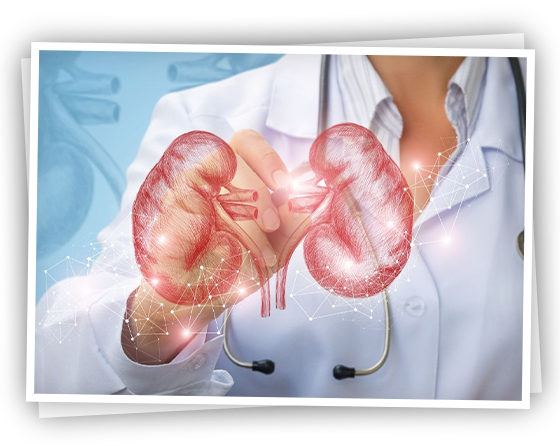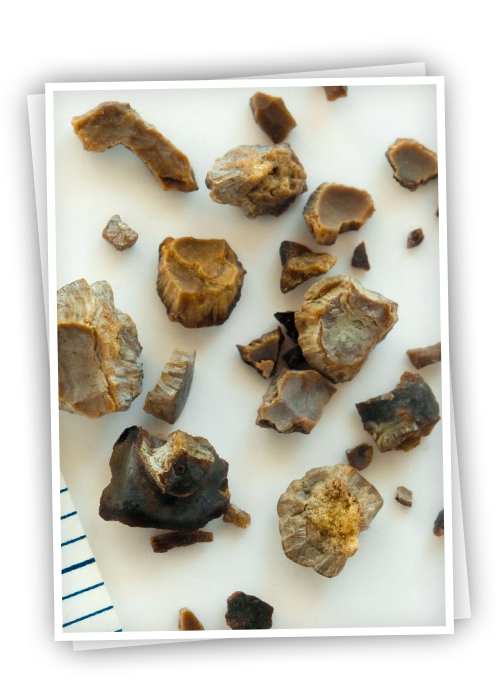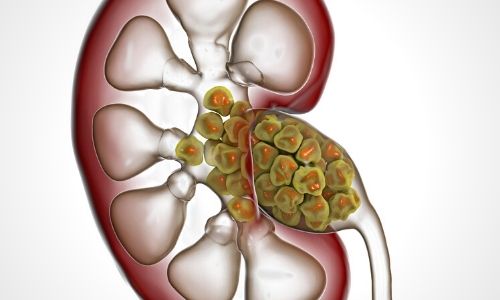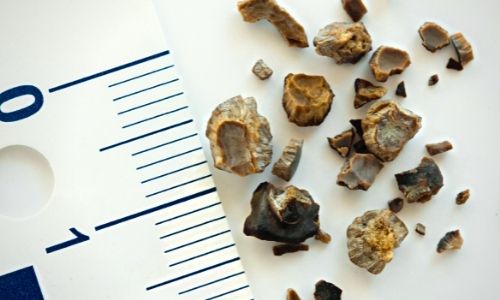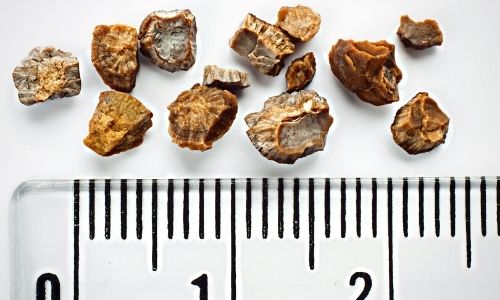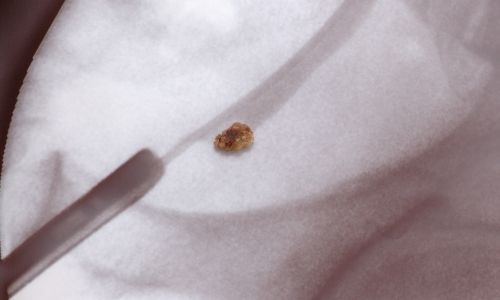How Does Kidney Stone Cause Symptoms?
The most common symptoms are periodic increasing and decreasing pain (renal colic) occurring in our flank-side region, burning and color change in the urine. The pain is blunt, severe, excruciating, and passing. Generally, patients describe the pain as the most severe pain they have ever experienced. It is even compared to the labor pain experienced by women.
When the stones fall from the kidney to the urinary canal, the pain is in the groin area and may radiate downwards. Pain does not increase or decrease with position. Nausea, vomiting, burning and discoloration of the urine may accompany the pain. If there is an infection with it, there may also be a fever. If kidney obstruction is bilateral, there is a decrease in urine output.
Although rare, stone patients with no complaints are also encountered.
How is Kidney Stone Diagnosed?
We use biochemical and radiological methods to diagnose. For this, we direct patients to the laboratory and radiology departments:
The first test is a urinalysis. Blood cells, crystals and bacteria are seen in the urine of stone patients if there is an infection. As a blood test, kidney function tests (creatinine, urea, BUN) should be done first. If infection is suspected, complete blood count and infection markers should be performed.
Definitive diagnosis of stone disease is made by radiological methods.
Ultrasound: It is the first preferred method. Not using radiation is the most important advantage and it is the first preferred method in children and pregnant patients.
X-Ray: As approximately 70% of the stones contain calcium, they can be viewed with X-ray (direct urinary system radiography). Stones that can be visualized by X-ray are called opaque (Ca-phosphate, Ca-oxalate), and those that cannot be visualized are called radiolucen or non-opaque stones (uric acid, ammonium urate, xanthine, drugs-induced stones). If some stones cannot be seen clearly, they are called semi-opaque (magnesium-ammonium-phosphate: struvite, apatite and cystine).
Tomography: Computed tomography (CT) is now accepted as the most sensitive (99%) method in the diagnosis of stone patients. The location of the stone, its size and hardness (density), giving information about the relationship of the kidney with the intra-abdominal organs are its greatest advantages. Although radiation exposure is its biggest disadvantage, this concern has been eliminated with the use of devices that emit low-dose radiation today.
Other:
Nuclear methods (DMSA, DTPA, MAG3) can be applied in cases of structural disorders that cause loss of function or drainage disorder in the kidney. Magnetic resonance imaging (MRI) is the examination method that can be preferred in pregnant patients for whom X-ray methods are inconvenient.
How to Reduce Kidney Stones?
Small stones formed in the kidney may move and fall into the urinary tract. This condition blocks the narrower urinary tract (ureter), causing swelling and severe pain in the kidney. Pain relief is our first priority in these patients. If the stone is in a size that can easily fall out of the urinary tract (if it is less than 10 mm), it can be made easier to pass the stone with drugs that expand the urinary canal.
The most commonly used drugs for this purpose are prostate drugs (alpha blocker drugs). Prostate drugs are especially effective in the treatment of ureteral stones, due to their dilating properties of the urinary tract. Patients are also advised to move around and drink plenty of fluids. Necessary treatments should also be given to patients with nausea and infection.
How Is Kidney Stone Treated?
The treatment of kidney stone is planned according to the location of the stone, its size, the patient's clinical condition and accompanying diseases.
Stone breaking with extracorporeal sound waves (ESWL)
It is a treatment method that does not require anesthesia and is applied to small kidney stones. This method is based on the transmission of sound waves produced from a generator from the skin to the kidney and stone and the fragmentation of the stones. Several sessions are required to ensure complete stone-freeness. Broken stone fragments are excreted spontaneously from the body through the urinary tract. It is not preferred for pregnant women and patients taking blood thinners.
The hardness of the stone, the distance between the stone and the skin, the location of the stone in the kidney, and the size of the stone are the factors affecting success. Considering all these factors, it can be safely and successfully applied in appropriate patients.
Uretero-renoscopic lithotripsy (URS)
It is known as bloodless and incisionless surgery. Under anesthesia, it is the fragmentation of stones in the ureter or kidney by entering the urinary tract (urethra) first into the urinary bladder (bladder) and then into the urinary canal (ureter) with instruments (endoscopes) that have a very thin end camera and allow us to see inside the body. The stones in the upper ureter and kidney are turned into powder by using endoscopes, which we call flexible ureterorenoscope, and laser and left to spill spontaneously. Larger stone pieces are taken out with tools we call baskets. It can be used safely in patients taking blood thinners. Its biggest advantages are that it is made without any incisions in the body and short hospital stay. Its success is low in large kidney stones and it is a disadvantage that several sessions are required.
Percutaneous nephrolithotomy (PNL)
pnl It is the procedure where a tube-path is created on the back, extending from the skin to the kidney under anesthesia, and the stones are broken up and taken out by entering the kidney with endoscopes (nephroscope) through this path. It is the most successful method especially in large size (greater than 2 cm) kidney stones where other methods fail.
Apart from these methods, laparoscopic and open surgical methods can also be applied in the treatment of stones. Open surgery is almost abandoned today and is preferred in a limited patient group where other methods have failed. Laparoscopic surgery is applied as an alternative method to open surgery.
